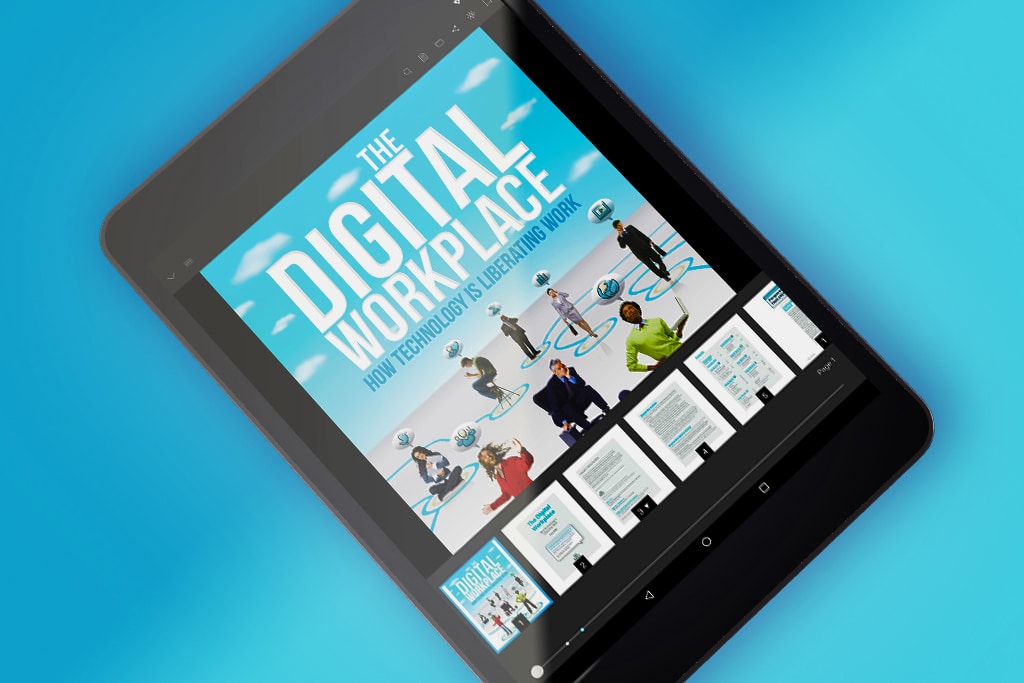It sounds straightforward, so why is there confusion on what a ‘digital brochure’ is? We look deeper.
Online brochure?
One of the biggest problems is that everyone has different experiences with brochures in digital formats, from the most basic flat digital images of a traditional printed brochure to the most advanced interactive multimedia experiences.
The majority of people are now comfortable with attaching and sharing PDF (Portable Document Format), and to many, this is the only ‘digital brochure’ format.
PDF Digital Brochures
As the most widely recognised format, familiarity can, unfortunately, breed indifference or complacency in what can be achieved.
For many documents or simple brochures, a pdf may be perfectly adequate but this should be a considered choice rather than a default.
It should also be considered as part of the design process so that the structure and format can make the most of simple functionality such as linking the contents page with specific sections or page numbers. Hyperlinks to online content and social media accounts are applied and large image files are adapted.
Electronic Publishing
A lot of people may confuse digital publications and digital brochures, but the function and purpose of these are completely different.
Most publications are saved in a format that is specifically designed for particular readers such as Kindle or Apple Books etc. These formats vary and Wikipedia lists them as:
These formats are perfect for books but are not suitable for more image-based publications such as brochures or magazines.
Digital Magazines
Similar to Electronic Books, these regular (weekly/monthly/etc) publications are created for specific apps that allow the magazine to be read and used. These apps allow the magazine to have a greater level of interactivity and often draw live content from the web including video.
But many printed magazines can be created in standalone, reader-free formats that don’t require a specific app to be read.
Online Brochures
These brochures are hosted online by a 3rd party and allow a host of interactive functionality. Once hosted they can be viewed through the 3rd party website or embedded on any webpage you own. These embedded brochures can then be viewed without leaving your website or clicked on and viewed full screen.
One of the most widely known of these is Issuu and Toast has a selection of brochures & publications that we have created for our clients on there. Check out this link https://issuu.com/toastdesign
An alternative solution is provided by Adobe, where publications created in Adobe InDesign can be hosted on their servers and viewed directly or through an embedded link.
This option is becoming more popular as it allows brochures designed in InDesign to be converted to an interactive digital intuitively and quickly. Old brochure artwork can be quickly adapted and made available online, utilising existing marketing materials.
New marketing materials can be designed with interactively in mind from day one, saving time and money on adaptation and increasing reach and accessibility.
A great example where this is becoming very popular is Annual Reports.

Interactive Annual Reports
Annual Reports are very often one of the largest and most complex publications a company may produce and involve significant time and money to complete. It makes sense to maximise the value gained from this process by creating an online version that can be shared with anyone around the globe in seconds.
Having designed countless Annual Reports and being trusted year after year by clients to do so, Toast has specialised in creating the very best in Interactive Annual Reports. A great example is the one we have done for Compassion UK.
The Most Important detail is…
Design. Technology is always best when it’s invisible and not a barrier to the message itself. Any interactive brochure that is successful will be down to the design weaving the content and technology together seamlessly. Interactivity needs to be part of the brief and fully explored before the designs are created. Talk with the designer about how the interactive elements can improve and enhance the reader’s experience and not overshadow the key marketing & brand messaging.
Technological advances and greater internet speeds have meant that large files are easier to share but no one wants their inbox bulging at the seams with huge pdf’s so talk to your designer about your different options.

